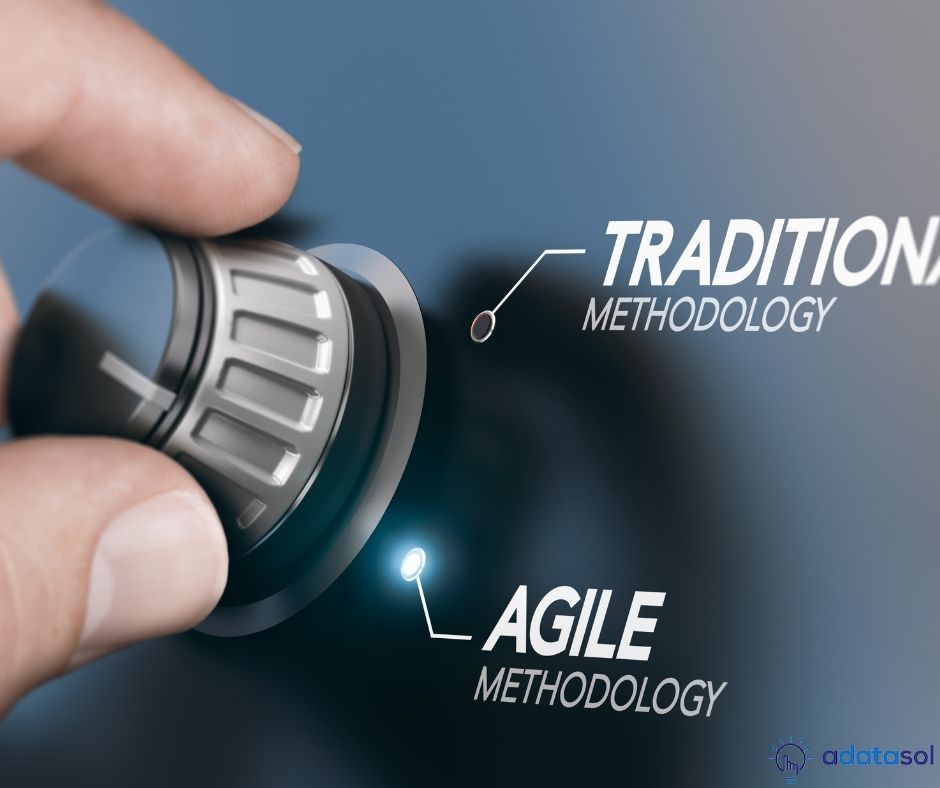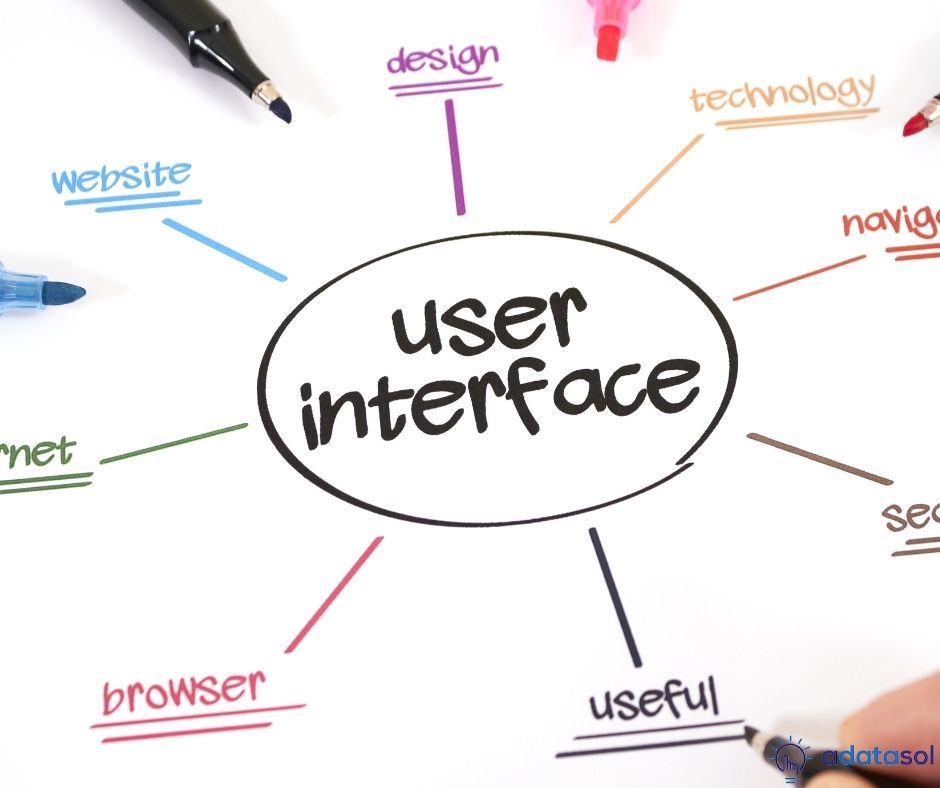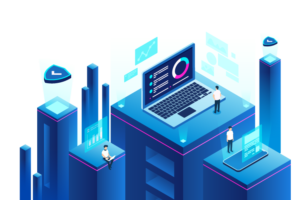By 2025, the software development landscape will have transformed even further. New technologies and methodologies will have emerged, altering the way we approach software design and development.
Understanding these changes is key to making an informed decision. It’s not just about finding a company that can code. It’s about finding a partner that understands your business, your goals, and your vision.
We’ll explore the key considerations, from understanding your own software development needs to evaluating potential partners.
- The role of agile software development
- The importance of digital product design
- The choice between custom software solutions and off-the-shelf options
By the end of this guide, you’ll be equipped with the knowledge and insights needed to make a confident decision about your software development partner in 2025.
Understanding the Software Development Landscape in 2025
The software development industry is dynamic, constantly evolving to meet new challenges and opportunities. By 2025, several key changes will redefine how we approach software development.
New technologies will continue to emerge, reshaping existing practices and introducing innovative solutions. The rise of artificial intelligence and machine learning will influence software design and development processes.
In addition to technology advancements, methodologies are evolving as well. Agile software development will remain a cornerstone, but new methodologies that promote flexibility and adaptability are expected to rise. These advancements aim to enhance team collaboration and improve project outcomes.
To thrive in this environment, it’s crucial to stay informed about industry trends. Here’s what to watch:
- AI and Machine Learning: Enabling smarter, more efficient software.
- Blockchain: Enhancing security and transparency in data handling.
- Edge Computing: Allowing real-time data processing closer to the source.
- DevOps Expansion: Increasing collaboration between development and operations.
Understanding these changes will help you choose a software partner that embraces innovation and aligns with your long-term vision. Your software partner should not only be technically adept but also forward-thinking, ready to adapt to the future landscape.
Identifying Your Software Development Needs

Before embarking on a software development project, it’s crucial to define your project’s scope and objectives. Clearly outlining what you aim to achieve helps streamline the development process. This clarity guides your software partner and ensures a shared understanding.
Aligning your business goals with technical requirements is another key step. This alignment ensures the software solution supports your strategic vision and operational needs. A thorough assessment of your technical needs lays the foundation for a successful partnership.
Consider the features and functionalities essential for your software, and prioritize them accordingly. Engaging stakeholders early helps identify critical elements and avoid costly changes later. With clear goals and aligned requirements, you are better prepared to collaborate effectively with your chosen software partner, ensuring the success of your project and meeting your business objectives efficiently.
Evaluating Potential Software Development Partners
When selecting a software development partner, assessing capabilities and expertise is paramount. Look for a partner with a proven track record and relevant industry experience. Expertise in the latest technologies can give your project a competitive edge.

Evaluating past projects and client testimonials provides valuable insights. These reviews can reveal a partner’s ability to deliver quality solutions. Pay attention to the complexity and diversity of their portfolio, as it reflects their adaptability and innovation.
Key Criteria to Assess:
- Technical competence and domain expertise
- Case studies and successful project deliveries
- Client references and reputation in the industry
Beyond technical skills, cultural fit and communication style are equally important. A partner with a similar cultural mindset can facilitate smoother collaboration. Shared values and understanding lead to better problem-solving and innovation.
Effective communication is crucial for project success. A partner who is transparent and responsive helps maintain project momentum. Open lines of communication ensure that objectives are met, and issues are promptly addressed. Together, these elements foster a strong, collaborative partnership crucial for delivering successful software projects.
A Partnership with Putman Properties
At Putman Properties, the vision of streamlining operations and enhancing efficiency was met with a tailored software solution that transformed their legacy processes. By integrating a centralized platform, we eliminated the cumbersome task of accessing multiple applications to generate in-house listing reports and fact sheets.

This innovative solution not only simplified the import of photos, floor plans, and text information but also ensured that Putman could efficiently create commercial property fact sheets, vacant land fact sheets, and industrial property fact sheets. The result was a seamless workflow that empowered Putman Properties to present their listings with clarity and professionalism.
The collaboration between our team and Putman Properties exemplifies the essence of a successful partnership. By aligning our technical expertise with their business goals, we developed a solution that not only met their immediate needs but also positioned them for future growth.
The enhanced property management service now operates with greater agility, allowing Putman to maintain the value of over 1.5 million square feet of property while providing potential clients with detailed and accessible information about available properties. This partnership underscores the importance of understanding a client’s vision and delivering a solution that drives success.
The Role of Agile Software Development in 2025
Agile methodologies have revolutionized the software development landscape. In 2025, their relevance continues to grow. Agile’s iterative approach and flexibility help manage fast-paced technological changes.

Agile’s core principles include collaboration and customer feedback. This ensures continuous alignment with client needs and project goals. The iterative cycles promote adaptability, crucial in today’s dynamic market.
When assessing a partner’s agility, consider their approach to change management. A partner with a strong agile framework is often responsive and adaptive. Their ability to pivot quickly in response to feedback is a valuable asset.
Moreover, evaluating their team dynamics and communication strategies is key. Effective agile teams demonstrate seamless collaboration among members. They are transparent and maintain open lines of communication, fostering innovation and timely delivery.
A partner proficient in agile methodologies can significantly enhance project outcomes. Their adaptability and focus on delivering customer-centric solutions make them indispensable in the ever-evolving software development field.
Digital Product Design and User Experience
In 2025, user-centric design is paramount for successful digital products. A well-crafted user experience ensures that software is intuitive and enjoyable. This focus on users boosts engagement and satisfaction.

User-centric design prioritizes ease of use and accessibility. It considers the user’s needs at every development stage. This approach helps create solutions that resonate with end-users.
Evaluating a partner’s design portfolio is vital in choosing the right development firm. A strong portfolio showcases their capability to create effective interfaces and experiences. It provides insight into their creativity and problem-solving skills.
Look for projects in their portfolio that highlight versatility and innovation. Consider how their designs align with your aesthetic vision and functional requirements. A diverse portfolio often indicates the ability to adapt to various industries and user needs.
Additionally, seek out feedback and reviews from previous clients regarding their experiences. This provides valuable insights into the partner’s design process and user satisfaction. Selecting a partner skilled in digital product design ensures that your users enjoy seamless interactions.
Custom Software Solutions vs. Off-the-Shelf Options
Choosing between custom software solutions and off-the-shelf options depends on your project’s unique needs. Custom development is ideal when your requirements are specific and can’t be met by existing products. It offers personalized features that cater directly to your business goals.
Custom software provides several advantages, including flexibility and scalability. These solutions adapt as your business grows, ensuring they remain relevant and effective. This adaptability can be crucial for companies anticipating rapid changes or expansion.
Another significant benefit of custom solutions is the competitive edge they offer. Tailored software aligns perfectly with your operational processes. This alignment can improve efficiency and allow for specialized features that give your business an advantage over competitors using generic solutions. In essence, while off-the-shelf options might save time initially, custom software solutions offer long-term strategic benefits that can drive your business forward.
The Importance of Cybersecurity in Software Development
Cybersecurity is a critical concern in today’s technology-driven world. Ensuring your software is secure should be a top priority. When selecting a development partner, evaluate their security protocols. It’s essential to understand how they protect data and prevent breaches.
Security must be integral to the software design process. A partner’s approach to cybersecurity can influence the overall design and functionality of your software. Look for partners who prioritize security at every stage, from initial design to final deployment.
Robust cybersecurity measures help protect sensitive information and build trust with users. Inadequate security could lead to data breaches, damaging your company’s reputation and causing financial losses. By choosing a partner with proven security expertise, you can mitigate risks and ensure your software remains secure and reliable. In summary, prioritize cybersecurity to safeguard your business and user data.
Application Development Company vs. Software Development Firm
Understanding the distinction between an application development company and a software development firm can greatly affect your project outcomes. While these terms often overlap, they aren’t identical. An application development company usually focuses on building specific applications, often tailoring solutions to exact user requirements.
Software development firms, on the other hand, tend to offer a broader range of services. They may include the development of complex systems, enterprise solutions, and comprehensive software products. These firms typically handle larger scale projects that require extensive integration and long-term support.
Choosing between these options should align with your project’s focus and scope. For a specialized application, an app development company might be a better fit. If your project involves broader software needs or enterprise-level solutions, a software development firm may provide more comprehensive services. Carefully assess your project’s requirements to make an informed decision.
Planning for the Future: Scalability and Maintenance
When choosing a software development partner, consider how your software will evolve over time. Scalability is crucial for accommodating growth without major overhauls. Ensure that your partner plans for scaling from the start, integrating flexibility into the design and architecture.
Maintenance is another critical factor in the software lifecycle. Regular updates and bug fixes are necessary to keep your software operating smoothly. A reliable development partner will offer ongoing support, addressing issues promptly to minimize downtime and keep your operations running efficiently.
Discuss maintenance plans with potential partners early on. Understand their approach to updates and how they handle unforeseen issues. This foresight will help ensure your software remains robust and adaptable as your business grows, sparing you from unexpected hurdles and costs down the line.
Making the Decision: Selecting Your Software Development Partner
Choosing the right software partner requires a careful final review. Create a checklist to ensure all bases are covered. This includes confirming the partner’s technical capabilities, past experience, and understanding of your industry.
Before signing an agreement, clarify the steps needed to kickstart collaboration. Define roles and responsibilities to avoid ambiguity. Establish clear communication channels and set expectations for project milestones and deliverables.
Here’s a simple checklist to guide your final decision:
- Review technical expertise and experience.
- Confirm cultural fit and communication style.
- Discuss project timelines and budget alignments.
- Assess compatibility with your long-term goals.
- Establish support and maintenance commitments.
Once satisfied, initiate the partnership with clear, documented agreements. A strong foundation will pave the way for a successful collaboration, leading to innovative solutions tailored to your needs.
Conclusion: The Path Forward with Your New Software Development Partner
Embarking on a collaboration with the right software partner marks the beginning of an exciting journey. Embrace the partnership by cultivating open communication and mutual respect. Trust in their expertise while clearly communicating your vision and objectives.
As you look ahead, focus on fostering a collaborative environment to ensure seamless project execution. Prioritize regular reviews and flexibility to adapt to changes. By establishing a strong partnership, you’re well-positioned to achieve project success and innovation, ensuring your business thrives in 2025 and beyond.





